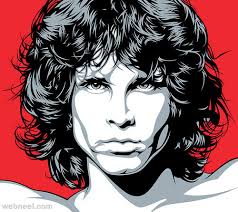Vector art is a type of digital art that has become increasingly popular in recent years. Unlike traditional raster images, which are made up of pixels, vector art is created using mathematical equations to define lines and shapes. This means that vector images can be scaled up or down without losing any quality, making them ideal for use in a wide range of applications.
One of the key benefits of vector art is its versatility. Because vector images can be resized without any loss of quality, they are ideal for use in a variety of contexts, from small icons to large-scale billboards. This makes them a popular choice for graphic designers, illustrators, and other artists who need to create images that can be used across multiple platforms.
Another benefit of vector art is its ability to create clean and precise lines. Because vector images are defined by mathematical equations rather than pixels, they can be easily edited and manipulated to create the desired effect. This makes them ideal for creating logos and other designs that require clean lines and sharp edges.
Vector art is also highly customizable. Because each element in a vector image is defined separately, it can be easily modified or replaced without affecting the rest of the image. This makes it easy to experiment with different colors, shapes, and textures until you achieve the desired effect.
One potential downside of vector art is that it can be more time-consuming to create than raster images. Because each element must be defined separately using mathematical equations, it can take longer to create a complex image than it would with a raster image. However, many artists find that the precision and versatility of vector art make it worth the extra effort.
Overall, vector art is an excellent choice for anyone looking to create clean, precise images that can be used across multiple platforms. Whether you’re a graphic designer creating logos and icons or an artist looking to experiment with new techniques, vector art offers endless possibilities for creativity and customization.
Answers to Common Questions About Vector Art
- What is the difference between vector art and digital art?
- Is vector art a PNG?
- What is meant by vector art?
- How do you make vector art?
What is the difference between vector art and digital art?
Vector art and digital art are both types of digital imagery, but they differ in how they are created and their characteristics.
Vector art is created using mathematical equations to define lines and shapes. It is resolution-independent, which means that it can be scaled up or down without losing any quality. Vector art is often used for creating logos, icons, and other graphics that require clean lines and sharp edges. Because vector images are defined by mathematical equations rather than pixels, they can be easily edited and manipulated to create the desired effect.
Digital art, on the other hand, encompasses a wide range of styles and techniques that use digital tools to create images. Digital art can include anything from paintings created using digital brushes to 3D models created using computer software. Unlike vector art, digital art is not resolution-independent. This means that if you try to scale up a raster image too much, it will become pixelated and lose quality.
In summary, the main difference between vector art and digital art lies in how they are created and their characteristics. Vector art is created using mathematical equations to define lines and shapes, while digital art encompasses a wide range of styles and techniques that use digital tools to create images. Vector art is resolution-independent, while raster-based digital art is not.
Is vector art a PNG?
Vector art is not a PNG file. PNG (Portable Network Graphics) is a raster image format, while vector art is created using mathematical equations to define lines and shapes, making it a completely different type of digital art. Vector art files are usually saved in formats such as .ai (Adobe Illustrator), .eps (Encapsulated PostScript), or .svg (Scalable Vector Graphics). These formats allow the vector images to be edited and scaled without losing any quality, which is not possible with raster images like PNG.
What is meant by vector art?
Vector art is a type of digital artwork that is created using mathematical equations to define lines and shapes. Unlike raster images, which are made up of pixels, vector images are defined by geometric shapes such as points, lines, curves, and polygons. This allows vector images to be scaled up or down without losing any quality, making them ideal for use in a wide range of applications. Vector art is commonly used in graphic design, illustration, and other forms of digital art.
How do you make vector art?
Vector art is created using vector graphics software, such as Adobe Illustrator, Inkscape, or CorelDRAW. Vector graphics are created using mathematical equations to create shapes and lines that can be scaled and manipulated without losing any quality. Vector art is used in logos, illustrations, and other graphic design projects.

